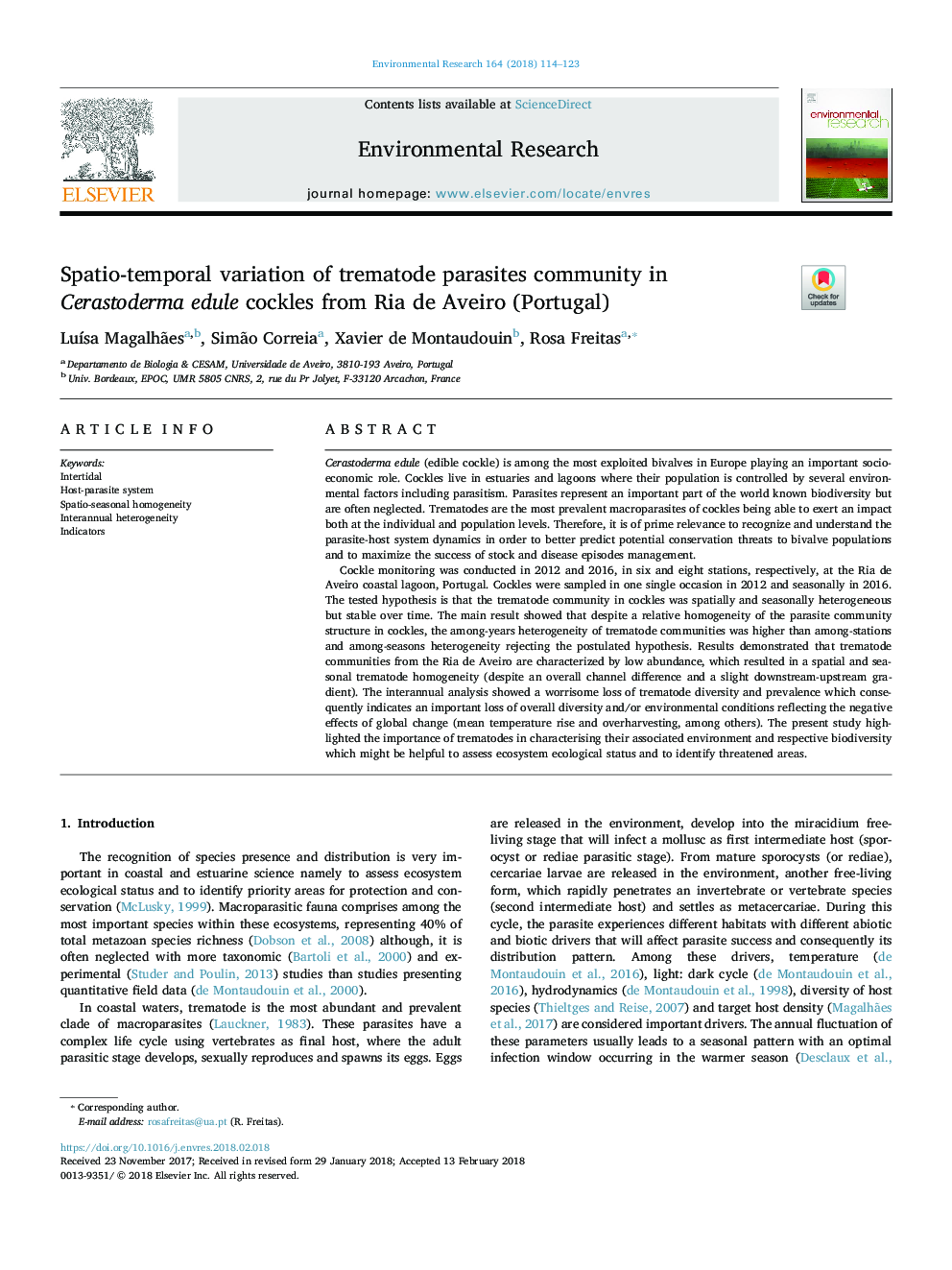| Article ID | Journal | Published Year | Pages | File Type |
|---|---|---|---|---|
| 8869041 | Environmental Research | 2018 | 10 Pages |
Abstract
Cockle monitoring was conducted in 2012 and 2016, in six and eight stations, respectively, at the Ria de Aveiro coastal lagoon, Portugal. Cockles were sampled in one single occasion in 2012 and seasonally in 2016. The tested hypothesis is that the trematode community in cockles was spatially and seasonally heterogeneous but stable over time. The main result showed that despite a relative homogeneity of the parasite community structure in cockles, the among-years heterogeneity of trematode communities was higher than among-stations and among-seasons heterogeneity rejecting the postulated hypothesis. Results demonstrated that trematode communities from the Ria de Aveiro are characterized by low abundance, which resulted in a spatial and seasonal trematode homogeneity (despite an overall channel difference and a slight downstream-upstream gradient). The interannual analysis showed a worrisome loss of trematode diversity and prevalence which consequently indicates an important loss of overall diversity and/or environmental conditions reflecting the negative effects of global change (mean temperature rise and overharvesting, among others). The present study highlighted the importance of trematodes in characterising their associated environment and respective biodiversity which might be helpful to assess ecosystem ecological status and to identify threatened areas.
Keywords
Related Topics
Life Sciences
Environmental Science
Health, Toxicology and Mutagenesis
Authors
LuÃsa Magalhães, Simão Correia, Xavier de Montaudouin, Rosa Freitas,
